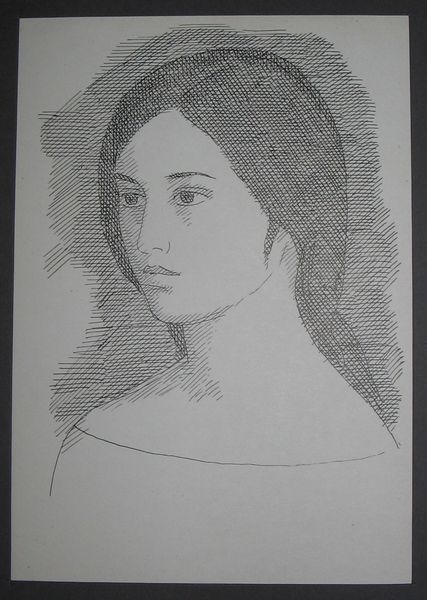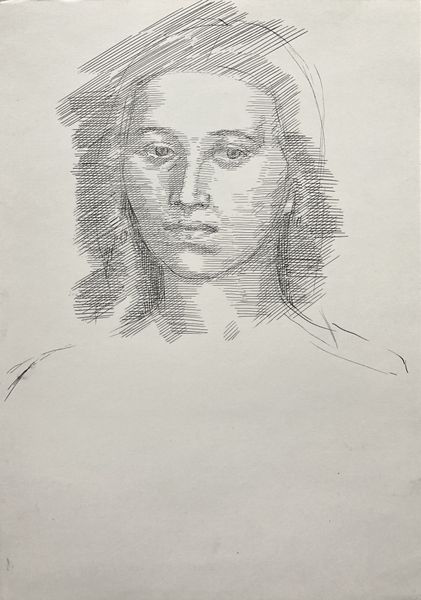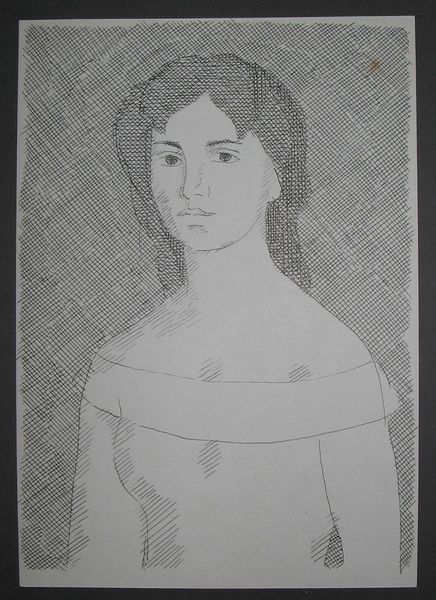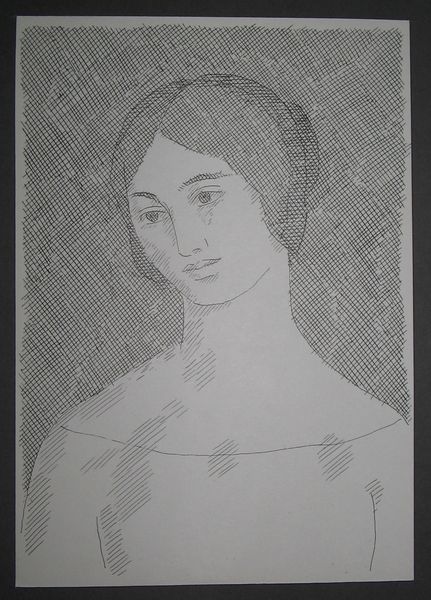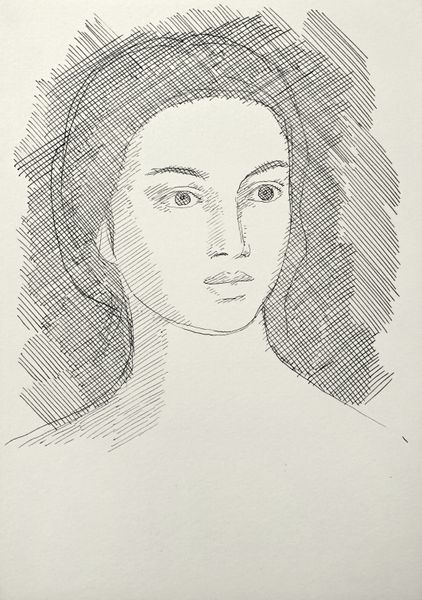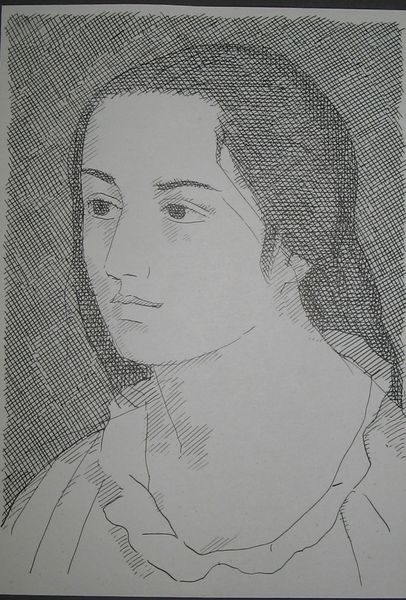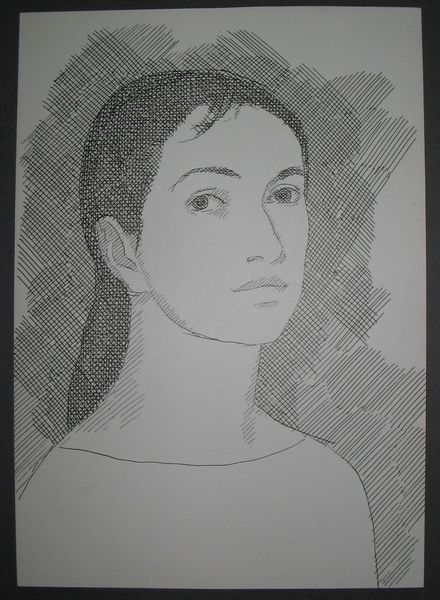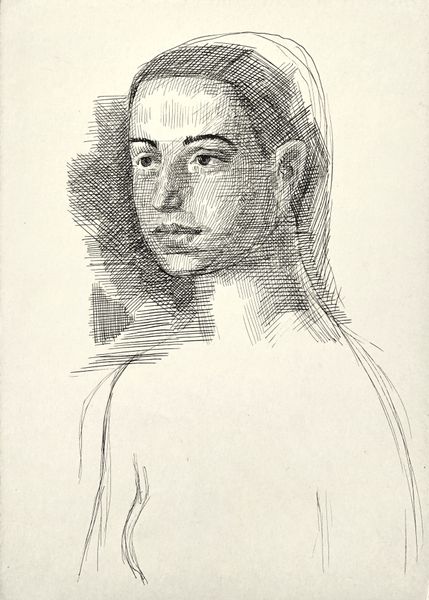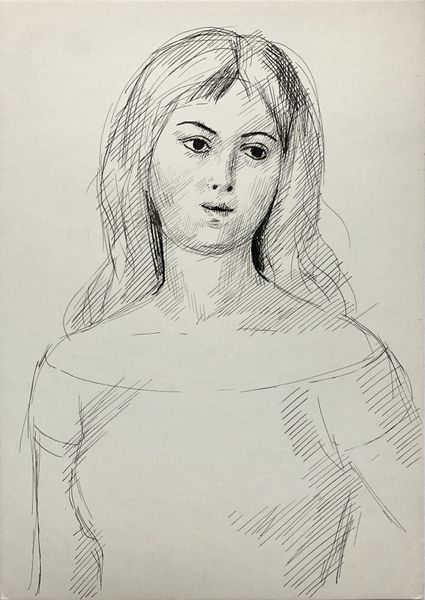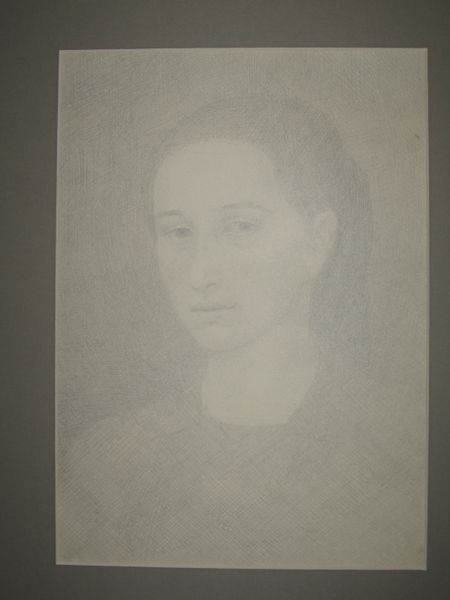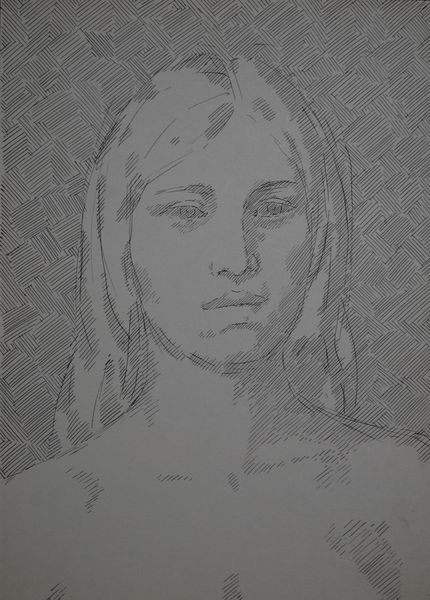
Female Image. From the series 'Search for Pushkin's Female Images' 1970
0:00
0:00
hryhoriihavrylenko
Private Collection
drawing, paper, ink, graphite
#
portrait
#
pencil drawn
#
drawing
#
pencil sketch
#
paper
#
portrait reference
#
ink
#
pencil drawing
#
sketch
#
line
#
graphite
#
portrait drawing
#
pencil work
#
realism
Copyright: Hryhorii Havrylenko,Fair Use
Curator: Good morning. We're here in front of Hryhorii Havrylenko's piece, "Female Image. From the series 'Search for Pushkin's Female Images'", created around 1970 using ink and graphite on paper. It's currently held in a private collection. Editor: It’s such a tender image. It feels incomplete, though, like a half-remembered dream rendered in precise lines. There’s a certain vulnerability about her, the way the lines create shadow but also seem to dissolve the form. Curator: I see what you mean. The line work is so intricate, almost like a web, but the features remain soft. I think that interplay is key. Havrylenko was deeply engaged with portraying the feminine ideal through a male gaze, drawing heavily from literary references, specifically Pushkin. So there is tension in this almost ethereal representation; is this an attempt to idealize or perhaps objectify? Editor: The "Search for Pushkin's Female Images" adds another layer. Considering Pushkin’s own complex relationship with women, and the societal constraints of the time, one must ask: is this portrait complicit with or critical of those representations? I am drawn to her eyes, gazing slightly to her left, offering no immediate, self-assertive claim of one's attention. Curator: Precisely! It isn't a forceful gaze. The cross-hatching and the almost unfinished quality contributes to the impression of searching. It reminds me of portrait sketches prepared for a painting that could be later worked over. And let’s not ignore that the very act of "searching" implies that something is missing. What did Havrylenko seek? Editor: Perhaps he sought to challenge the power dynamics inherent in representation, and the canon of portraiture. Think of Laura Mulvey's work, pointing at the ways the "male gaze" functions in cinema. The absence, the “sketchiness,” resists a fixed, easily consumable image, possibly making space for female subjectivity. Curator: Or at least raising the question of it. To me, the unfinished character speaks to the elusiveness of capturing a person's true essence. I mean, aren’t we all, in some way, constantly searching for our own images, our own identities? Editor: I suppose we are. Curator: Thank you for allowing me to delve into this. I am grateful for how your interpretation revealed dimensions that eluded me upon my first inspection. Editor: The pleasure was all mine! It has become clear that what art says relies so deeply on where we, as the audience, are positioned when listening.
Comments
No comments
Be the first to comment and join the conversation on the ultimate creative platform.
